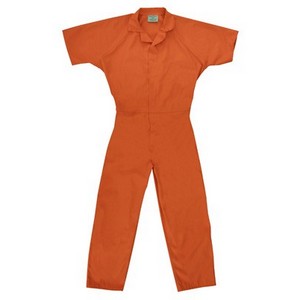Incarceration is a form of punishment that has been in existence for centuries. It is often said that prison is meant to rehabilitate offenders and prepare them for reentry into society. However, prison can also be a dangerous and dehumanizing place. One aspect of this experience that many people don’t think about is the uniform that inmates wear. In this article, we will explore the history of prison uniforms, their purpose, and the impact they have on inmates.
The History of Prison Uniforms
The concept of prison uniforms can be traced back to the early 19th century. Prior to this time, prisoners were often forced to wear their regular clothing, which led to confusion and made it difficult to identify inmates. In 1816, New York’s Auburn State Prison introduced the “New York prison system,” which included the use of a distinctive uniform for inmates. This was meant to make it easier to identify prisoners and also to make them more easily controlled.


Over time, the use of prison uniforms became widespread. In the United States, many prisons adopted the “black and white” striped uniform that we commonly associate with prison today. However, in recent years, there has been a movement to move away from this uniform due to its negative connotations.
The Purpose of Prison Uniforms
The primary purpose of prison uniforms is to make it easier to identify inmates. This is especially important in large facilities, where it can be difficult to keep track of everyone. Additionally, uniforms can help prevent escapes, as it is more difficult for an inmate to blend in with the general population when they are wearing a distinct uniform.
Another purpose of prison uniforms is to maintain order within the prison. Uniforms can be used to signify a prisoner’s status within the prison hierarchy. For example, some prisons use different colored uniforms to indicate whether a prisoner is a violent offender or a non-violent offender.
The Impact of Prison Uniforms on Inmates
While prison uniforms serve a practical purpose, they also have a psychological impact on inmates. Being forced to wear a uniform can be dehumanizing and make inmates feel like they have lost their individuality. This can lead to feelings of depression and low self-esteem.
Furthermore, the use of prison uniforms can lead to stigmatization. When inmates are released from prison and reenter society, they may find it difficult to find employment or housing due to the negative associations that come with having been in prison. Wearing a prison uniform while incarcerated can exacerbate this stigma and make it even more difficult for inmates to reintegrate into society.
Alternatives to Traditional Prison Uniforms
In recent years, there has been a movement to move away from traditional prison uniforms. Some facilities have started using different colored uniforms to indicate a prisoner’s status, rather than the traditional black and white stripes. Others have started using clothing that is more similar to what people wear outside of prison.
Some experts have even suggested doing away with prison uniforms altogether. They argue that this would help to humanize inmates and reduce the negative impact of incarceration on their mental health.
Conclusion
Prison uniforms have been a part of the criminal justice system for centuries. While they serve a practical purpose, they also have a negative impact on inmates’ mental health and can contribute to stigmatization after release. As we continue to reform the criminal justice system, it’s important to consider alternative options for identifying and maintaining order within prisons.

